Did you know that over 100 species of mushrooms can be found in a typical backyard? This raises a crucial question for dog owners: can dogs eat mushrooms that grow in the yard? I often worry about my furry friend munching on a mushroom snack or poisonous mushrooms while mushroom foraging, as they may contain harmful mushroom toxins. Not all mushrooms are safe, and some can be toxic or even deadly.
It’s vital to know which types of wild mushrooms are safe and which ones to avoid to prevent mushroom poisonings and backyard mushroom poisoning from mushroom toxins. In this post, I’ll share essential tips on identifying edible mushrooms and understanding their risks. Keeping my dog safe from wild mushroom is my top priority, and knowing more about these fungi helps me make better choices. Let’s dive into what every pet owner should know about mushrooms in the yard.
Key Takeaways
- Not all mushrooms are safe for dogs; familiarize yourself with common yard mushrooms to identify which ones are toxic.
- Learn how to differentiate between safe and poisonous mushrooms by researching their characteristics, such as color and shape.
- Be aware of the symptoms of poisoning in dogs from wild mushroom ingestion, which can include vomiting, diarrhea, and lethargy, so you can act quickly if needed.
- If your dog ingests a mushroom, contact your veterinarian immediately for guidance on the next steps to take.
- Implement effective prevention strategies, like regularly checking your yard for mushrooms and removing them promptly.
- Educate yourself and other pet owners about the risks of mushrooms in yards to keep dogs safe and healthy.
Common Yard Mushrooms
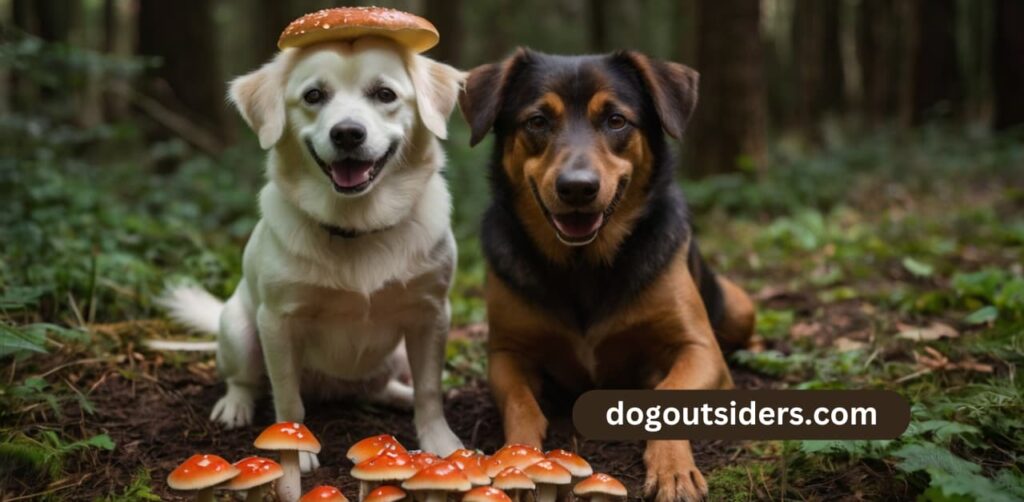
Yard Mushrooms
Many yard mushrooms are common species. They often grow in lawns and gardens. Most of these mushrooms are not harmful. However, some can look similar to edible varieties. This can lead to confusion.
Identifying the different mushrooms in your yard is crucial. Some may be safe for humans but toxic for dogs. I remember seeing a cluster of mushrooms in my backyard once. They looked harmless, but I learned they could be dangerous for pets.
Toxic Mushrooms
Certain mushroom species can be poisonous. These toxic mushrooms can cause serious health issues. Symptoms of poisoning include vomiting, diarrhea, and lethargy. In severe cases, it can lead to death.
Certain toxic mushrooms found in your yard can be easily mistaken for safe ones. For instance, the Death Cap mushroom is extremely harmful yet looks similar to some edible types. Another example is the Amanita muscaria, which may seem harmless but actually contains toxins.
Wild Mushroom Species
Wild mushroom species thrive in various environments. They often grow in damp, shaded areas. Moisture from rain encourages their growth. This means you may find new mushrooms after rainfall.
I often check my yard after a storm, looking for any new mushrooms. It’s important to stay vigilant about what grows in your space.
Mushroom Identification
Mushroom identification is essential for safety. Not all mushrooms are created equal. Some look similar but have different effects on health.
Using resources like field guides or smartphone apps helps with identification. Observing characteristics like color, shape, and gills is key. I’ve used an app to identify mushrooms before; it made me more confident about what I was seeing.
Wild Mushroom Poisoning
Wild mushroom poisoning is a real concern for pet owners. Dogs can easily ingest suspect mushrooms while exploring the yard. Symptoms of wild mushroom poisoning include drooling and seizures.
If you suspect your dog has eaten a toxic mushroom, seek immediate veterinary care. Quick action can save your pet’s life.
Plain Mushrooms vs Portobello Mushrooms
Not all mushrooms are toxic; some are safe to eat. Plain mushrooms like button or portobello are popular in kitchens. These cultivated varieties differ from wild mushrooms found outdoors.
Portobello mushrooms are large and meaty, making them a favorite for grilling. However, they should not be confused with wild types that could be harmful.
Identifying Safe and Toxic Types
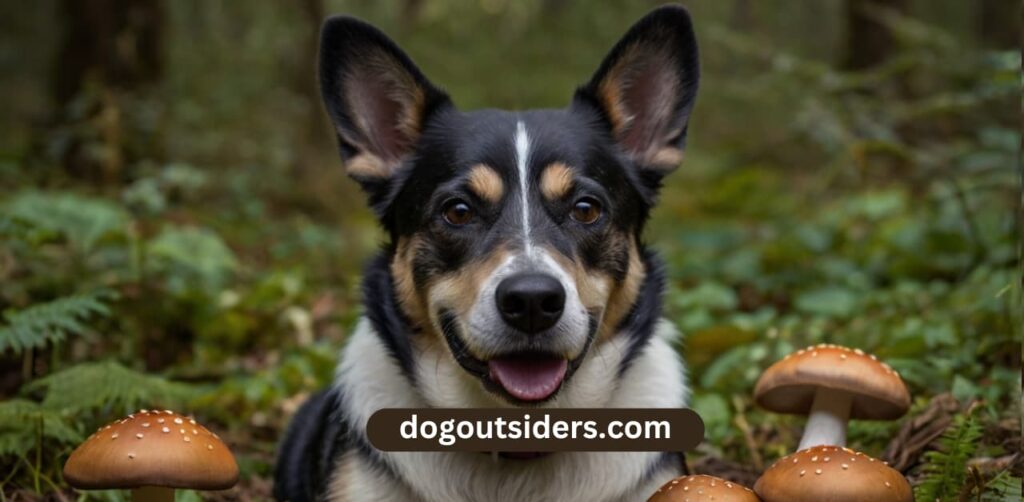
Visual Characteristics
Identifying mushrooms in your yard requires careful observation. Some mushrooms look similar but can be very different in safety. For example, edible mushrooms often have a smooth cap and a specific color pattern. In contrast, toxic varieties may display bright colors or odd shapes.
I often check the gills and stem of mushrooms too. Edible types usually have white or light-colored gills, while some toxic ones have dark gills. The texture of the mushroom can also help in identification. Smooth caps may indicate safety, while warty or scaly caps could signal danger.
Identification Tools
Utilizing mushroom identification apps is a smart way to ensure safety. These apps allow users to take pictures and receive instant feedback on species. Many provide detailed descriptions and images for comparison. I find these tools incredibly helpful when I’m unsure about a mushroom’s type.
Field guides are another useful resource. They offer comprehensive details on various species found in local areas. Look for guides that focus specifically on your region. This ensures that the information is relevant and accurate.
Consulting Experts
Consulting local experts or veterinarians is crucial if there’s any doubt about a mushroom’s safety. Many communities have mushroom clubs or local mycologists who can assist with identification. They often host foraging events where you can learn more about safe mushrooms.
Veterinarians also play an important role in this process. They can provide insights into which mushrooms are harmful to dogs. If I ever find a strange mushroom in my yard, I make sure to reach out to them for advice.
Common Toxins
Mushrooms can pose serious risks to dogs, especially those containing specific toxins like amatoxins and gyromitrins. Amatoxins are particularly dangerous and are found in mushrooms such as the Death Cap, which can be fatal for dogs. Gyromitrins, on the other hand, are found in false morels and can cause significant health issues.
If a dog ingests a toxic mushroom, symptoms may appear quickly or take time to develop. Signs include vomiting, diarrhea, or lethargy. Immediate veterinary attention is essential if any of these symptoms occur.
Personal Experience
In my experience, I once found a cluster of mushrooms growing near my dog’s favorite spot in the yard. I immediately checked their appearance against an app I had downloaded. The app confirmed they were safe, which gave me peace of mind.
However, I still monitor that area regularly. Keeping track of what grows in my yard helps ensure my dog’s safety.
Symptoms of Poisoning in Dogs
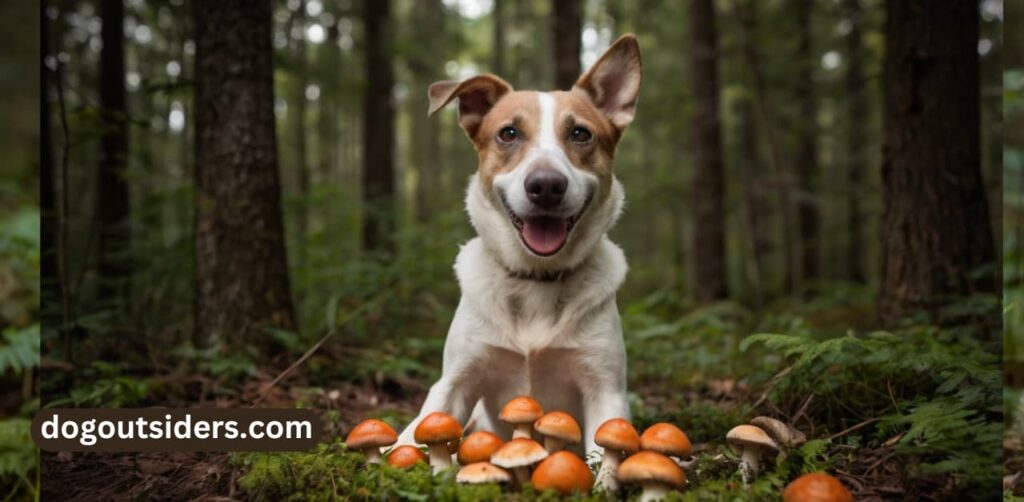
Immediate Signs
Observe for immediate signs of distress. Excessive drooling is often one of the first symptoms. Vomiting can also occur shortly after ingestion. If I notice these signs, I take action right away. These symptoms may indicate that the dog has consumed toxic mushrooms.
Delayed Symptoms
Monitor for delayed symptoms as well. Weakness is a common reaction to animal poisoning. Seizures can also occur in severe cases. I have seen dogs become very lethargic after eating something harmful. This can be alarming and requires quick attention.
Importance of Early Detection
Recognize that early detection of symptoms is crucial. It can significantly impact treatment outcomes. The sooner a dog receives care, the better chance they have for recovery. In my experience, prompt action can make all the difference.
If a dog shows any signs of distress, contact a veterinarian immediately. They can provide guidance based on the specific situation. They may ask about the type of mushroom or other potential toxins.
Common Symptoms to Watch For
- Excessive drooling
- Vomiting
- Weakness
- Seizures
- Lethargy
- Diarrhea
- Abdominal pain
These symptoms can vary depending on the type of mushroom ingested. Some mushrooms are more toxic than others, leading to different reactions in dogs.
In addition to observing physical symptoms, it’s important to note behavioral changes too. My dog once became unusually quiet after eating something questionable from the yard. This change was subtle but concerning.
What to Do Next
If you suspect your dog has eaten a toxic mushroom, do not wait for symptoms to appear. Take your pet to the vet immediately for an evaluation. Bring a sample or a picture of the mushroom if possible. This information helps veterinarians determine the best course of action.
What to Do if Ingested
Act quickly if you suspect your dog has eaten a mushroom. Time is crucial in these situations. I once faced this with my own dog. He showed signs of distress after playing outside. It was alarming, and I had to act fast.
First, contact a veterinarian immediately. They can provide guidance based on the symptoms your dog shows. Describe any signs of poisoning observed from the previous section. This helps the vet assess the situation better.
Gather information about the mushroom type and amount consumed. Identifying the specific species can be vital. Take a picture of the mushroom if possible. Note how much your dog ate and when it happened. This information aids in treatment decisions.
Follow veterinary advice closely. The vet may suggest inducing vomiting to remove the mushroom from your dog’s system. However, do not attempt this without professional guidance. Some mushrooms can cause more harm if vomited up.
If instructed, you might need to take your dog to an emergency care facility. Be prepared for this possibility. Keep your dog calm during transport. Stress can worsen their condition.
Monitor Symptoms
Keep an eye on your dog’s behavior after ingestion. Symptoms may vary based on the mushroom type. Common signs include vomiting, diarrhea, or lethargy. My friend’s dog experienced severe stomach issues after eating wild mushrooms. They had to rush him to the vet, where he received immediate care.
Document any changes in your dog’s condition. This information can help the vet make informed decisions about treatment options.
Follow Up Care
After initial treatment, follow up with your vet as needed. They may recommend additional tests or treatments based on your dog’s recovery progress. Regular check-ups ensure that no long-term effects develop due to mushroom ingestion.
I learned that keeping an open line of communication with my vet is essential during recovery. They provide valuable insights into my dog’s health needs.
Mushroom toxicity can lead to severe consequences for dogs. Being aware of what actions to take can save your dog’s life.
Prevention Tips
Prevent future incidents by educating yourself about safe and unsafe mushrooms in your area. Familiarize yourself with common types that grow in yards. Regularly inspect your yard and remove any unfamiliar fungi.
Training your dog not to eat unknown items outdoors can also help reduce risks. Positive reinforcement works well for teaching commands like “leave it.”
Effective Prevention Strategies
Regular Inspections
Regularly inspecting your yard is crucial. Wild mushrooms can appear quickly, often overnight. I make it a habit to check my yard at least once a week. During these inspections, I look for any new growths. If I find mushrooms, I remove them immediately. This helps reduce the chance of my dog ingesting something harmful.
Certain mushrooms that can be found in your yard pose serious risks to dogs. A prime example is the death cap mushroom, which can lead to severe health issues or even be fatal. It’s crucial to recognize which mushrooms are harmful, as this knowledge enables you to respond swiftly. Familiarize yourself with the common varieties in your region and learn how to identify them effectively.
Training Commands
Training your dog is another effective strategy. Teaching commands like “leave it” can be life-saving. I started training my dog as a puppy. Consistent practice made her responsive to commands. Now, she understands not to touch unknown items, including mushrooms.
Reinforcing this behavior is essential. Use treats and praise when your dog obeys the command. This positive reinforcement encourages good habits. It’s important for dogs to learn what is safe and what isn’t.
Designated Play Areas
Creating a designated play area can minimize risks. Choose a section of your yard that is free from wild mushrooms. I set up a specific spot where my dog plays safely. This area has grass and toys but no wild plants.
Fencing off this area can also help keep your dog away from potential dangers. Ensure the fence is tall enough so your dog cannot jump over it. This gives me peace of mind while my dog enjoys her outdoor time.
Additional Precautions
Consider using mulch or ground cover in areas where mushrooms tend to grow. These materials can prevent mushrooms from sprouting up in the first place. Keeping your yard clean and well-maintained also helps deter mushroom growth.
I also recommend keeping an eye on seasonal changes. Mushrooms often thrive in damp conditions during spring and fall. Being vigilant during these times can help catch any growth early.
Monitoring Yard Conditions
Regular Assessments
I often check my backyard for mushrooms. Regular assessments help identify areas where mushrooms may grow. Certain conditions, like dampness and shade, encourage mushroom growth. By walking around the yard frequently, I can spot any new growth early.
Observing your yard after rain is crucial. Wet conditions create a perfect environment for mushrooms to thrive. Look under trees and in shaded spots. These areas are more likely to host mushrooms. Keeping an eye on these locations helps prevent unwanted surprises.
Proper Drainage
Maintaining proper drainage is essential for a healthy yard. Mushrooms love moisture. If water collects in certain areas, it creates a breeding ground for them. I make sure to clear any debris from gutters and drains. This simple action reduces standing water.
Planting grass or ground cover can also help. These plants absorb excess water and improve drainage. A well-drained yard discourages mushroom growth significantly. I noticed fewer mushrooms after making these changes in my yard.
Sunlight Exposure
Sunlight plays a key role in controlling mushroom growth. Many mushrooms prefer dark, damp environments. I try to keep my garden well-lit by trimming overgrown trees and shrubs. More sunlight means less chance of mushrooms sprouting up.
Consider planting flowers or bushes that thrive in sunlight. These plants not only beautify the yard but also reduce shady spots that fungi love. My experience shows that brighter yards have fewer mushroom issues.
Healthy Lawn Environment
Encouraging a healthy lawn is another effective strategy against mushrooms. Healthy grass outcompetes mushrooms for nutrients and space. I regularly fertilize my lawn and mow it at the right height. This keeps the grass thick and strong.
Removing dead leaves and organic matter is important too. Mushrooms feed on decaying material, so keeping the yard clean helps deter them. I rake leaves promptly in the fall to minimize decay.
Consider aerating your lawn occasionally. Aeration allows air, water, and nutrients to reach the roots better. This promotes robust grass growth, which can suppress mushroom development.
Educating Pet Owners
Risks of Wild Mushrooms
Many pet owners underestimate the dangers of wild mushrooms. Certain types can be toxic to dogs. Some mushrooms contain toxins that can lead to severe illness or even death. For instance, the Amanita species is particularly harmful. Symptoms of poisoning may include vomiting, diarrhea, and lethargy. It’s crucial for dog owners to recognize these risks.
I often remind my friends to check their yards regularly. I have seen how quickly mushrooms can grow after rain. They can appear overnight, making it hard to keep track.
Identifying Mushrooms
Pet owners should learn how to identify mushrooms in their yards. There are many resources available online. Websites like the North American Mycological Association provide guides on mushroom identification. Apps also exist that can help identify mushrooms through photos.
Recognizing symptoms of mushroom poisoning is equally important. Common signs include drooling, seizures, and abdominal pain. If a dog shows any of these symptoms, seek veterinary care immediately.
Community Awareness Programs
Community awareness about pet safety is essential. Many neighborhoods host educational programs about wild mushrooms and their risks. These programs can inform pet owners about safe practices and identification tips.
I believe local veterinarians could play a key role here. They can offer workshops on recognizing dangerous mushrooms and understanding symptoms of poisoning. Sharing experiences helps build a knowledgeable community.
Preventive Measures
Preventing exposure to wild mushrooms is vital for dog safety. Regular yard maintenance can reduce the chances of mushrooms growing in your yard. Mowing grass and removing debris limits the environment where fungi thrive.
Pet owners should monitor their dogs during outdoor activities. If you notice your dog sniffing or eating something suspicious, intervene immediately. Training your dog to avoid unknown plants can be beneficial.
Resources for Dog Owners
Several resources exist to assist dog owners in understanding mushroom safety:
- Local Veterinary Clinics: They often provide information on local mushroom species.
- Online Forums: Communities like Reddit have discussions on pet safety regarding mushrooms.
- Pet Safety Apps: Some apps focus specifically on identifying plants harmful to pets.
Closing Thoughts:
I’ve shared key insights about yard mushrooms and their potential risks to dogs. Understanding which mushrooms are safe or toxic can save our furry friends from serious harm. Recognizing symptoms of poisoning and knowing what to do if ingestion occurs is crucial for every pet owner.
Prevention is the best strategy. Keeping an eye on your yard and educating yourself can make a big difference. I encourage you to take action. Regularly check your outdoor space and stay informed about local mushroom types. Your dog’s safety is worth it. Let’s keep our pets happy and healthy!
Frequently Asked Questions
Not all mushrooms are toxic, but many common yard varieties can be dangerous. It’s essential to identify specific types before allowing your dog to explore.
Safe mushrooms typically have a distinct appearance and grow in specific environments. Consult local guides or experts for accurate identification. When in doubt, it’s best to keep your dog away.
Symptoms of mushroom poisoning may include vomiting, diarrhea, lethargy, and seizures. If you notice these signs, seek veterinary help immediately.
Regularly inspect your yard and remove any mushrooms you find. Training your dog to avoid unknown plants can also be effective.
All dogs can be affected by toxic mushrooms, but certain breeds may show symptoms more severely due to size or health conditions. Always monitor your pet closely.
Yes! Sharing knowledge with fellow pet owners helps ensure their dogs’ safety. Educated communities are better equipped to prevent accidents related to mushroom ingestion.
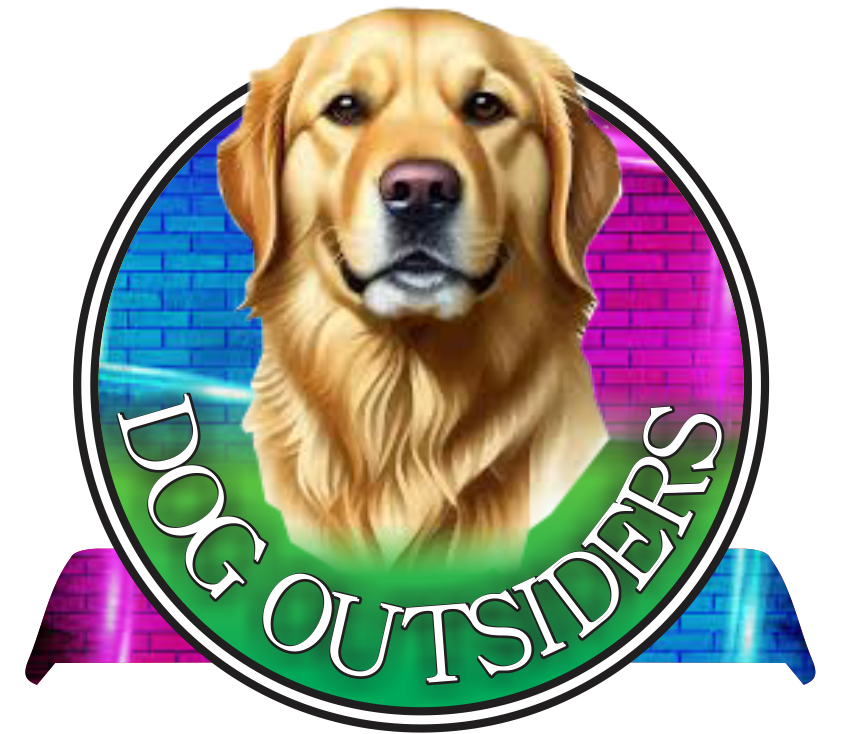



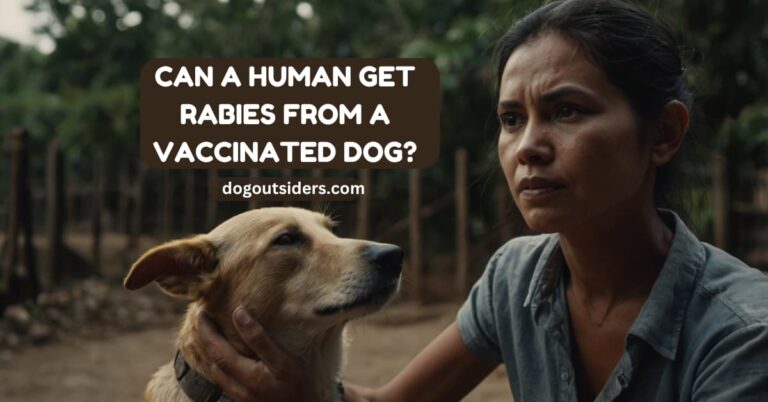
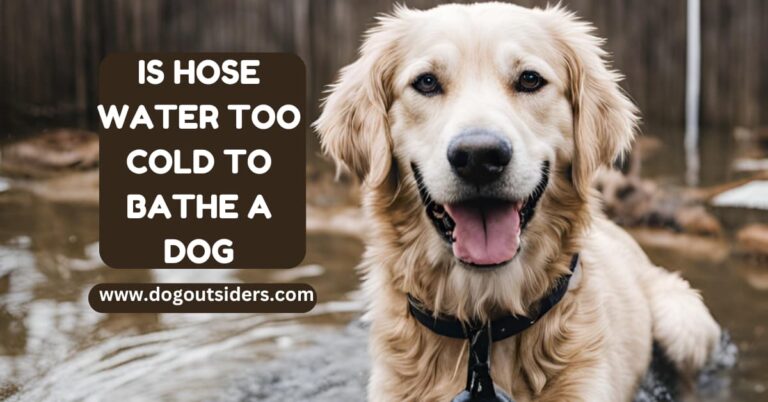

One Comment